
The Royal Australian Air Force (RAAF) is the principal air and space force of Australia, a part of the Australian Defence Force (ADF) along with the Royal Australian Navy and the Australian Army. Constitutionally, the Governor-General of Australia, is the de jure Commander-in-Chief of the Australian Defence Force. The Royal Australian Air Force is commanded by the Chief of Air Force (CAF), who is subordinate to the Chief of the Defence Force (CDF). The CAF is also directly responsible to the Minister for Defence, with the Department of Defence administering the ADF and the Air Force.
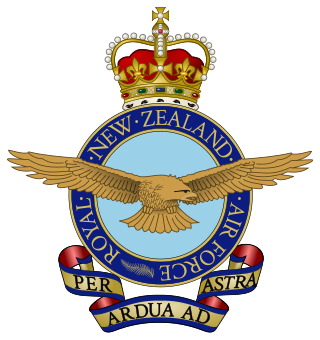
The Royal New Zealand Air Force is the aerial service branch of the New Zealand Defence Force. It was formed initially in 1923 as a branch of the New Zealand Army, being known as the New Zealand Permanent Air Force, becoming an independent air force on 1 April 1937.
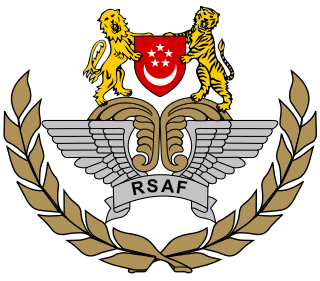
The Republic of Singapore Air Force (RSAF) is the aerial service branch of the Singapore Armed Forces (SAF) responsible for controlling and defending the airspace of the country, and providing air support to the Army and Navy.

The Airbus A330 Multi Role Tanker Transport (MRTT) is a European aerial refuelling and military transport aircraft based on the civilian Airbus A330. A total of 16 countries have placed firm orders for approximately 68 aircraft, of which 51 had been delivered by 30 November 2020. A version of the A330 MRTT, the EADS/Northrop Grumman KC-45, was proposed to the United States Air Force for its aerial tanker replacement programme and selected, but the programme was cancelled.

The Paya Lebar Air Base is a military airbase of the Republic of Singapore Air Force (RSAF) and United States Air Force in Singapore located at Airport Road in Paya Lebar, in the eastern region of Singapore. The airbase goes by the motto of Strength Through Readiness.

The Tengah Air Base is a military airbase of the Republic of Singapore Air Force (RSAF) located in the Western Water Catchment, in the western part of Singapore.

The Sembawang Air Base is a military airbase of the Republic of Singapore Air Force (RSAF) located at Sembawang, in the northern part of Singapore. The base motto is Swift and Resolute.
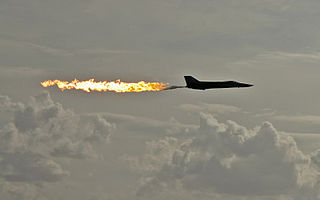
The Australian International Airshow, also called the Avalon Airshow, is a large air show held biennially at Avalon Airport, between Melbourne and Geelong in Victoria.

No. 79 Squadron is a Royal Australian Air Force (RAAF) flight training unit that has been formed on four occasions since 1943. The squadron was established in May 1943 as a fighter unit equipped with Supermarine Spitfires, and subsequently saw combat in the South West Pacific theatre of World War II. Between June 1943 and the end of the war in August 1945 it flew air defence patrols to protect Allied bases and ships, escorted Australian and United States aircraft, and attacked Japanese positions. The squadron was disbanded in November 1945, but was re-formed between 1962 and 1968 to operate CAC Sabres from Ubon Air Base in Thailand. In this role it contributed to the defence of Thailand against a feared attack from its neighbouring states and exercised with United States Air Force units. No. 79 Squadron was active again at RAAF Base Butterworth in Malaysia between 1986 and 1988 where it operated Mirage III fighters and a single DHC-4 Caribou transport during the period in which the RAAF's fighter squadrons were transitioning to new aircraft.
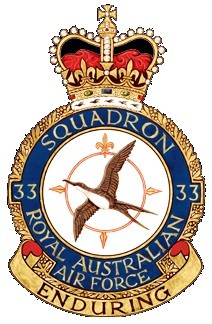
No. 33 Squadron is a Royal Australian Air Force (RAAF) strategic transport and air-to-air refuelling squadron. It operates Airbus KC-30A Multi Role Tanker Transports from RAAF Base Amberley, Queensland. The squadron was formed in February 1942 for service during World War II, operating Short Empire flying boats and a variety of smaller aircraft. By 1944 it had completely re-equipped with Douglas C-47 Dakota transports, which it flew in New Guinea prior to disbanding in May 1946.

No. 34 Squadron is a Royal Australian Air Force (RAAF) VIP transport squadron. It operates Boeing 737 Business Jets and Dassault Falcon 7Xs from Defence Establishment Fairbairn in Canberra. The squadron was formed in February 1942 for standard transport duties during World War II, initially flying de Havilland DH.84 Dragons in Northern Australia. In 1943 it re-equipped with Douglas C-47 Dakotas, which it operated in New Guinea and the Dutch East Indies prior to disbanding in June 1946.
RAAF Gingin, sometimes also RAAF Base Gingin or RAAF Base Gin Gin, is a Royal Australian Air Force (RAAF) small military airfield located at Gingin, in Western Australia.
No 85 Squadron was a Royal Australian Air Force (RAAF) fighter squadron which provided air defence to Western Australia during World War II. It was formed in 1943 and disbanded in 1945. The squadron did not see combat during the war, although it attempted to intercept Japanese aircraft on several occasions in 1943, without success.

No. 84 Wing is a Royal Australian Air Force (RAAF) transport wing. Coming under the control of Air Mobility Group (AMG), it is headquartered at RAAF Base Richmond, New South Wales. The wing comprises No. 35 Squadron, operating Aliena C-27J Spartan transport Aircraft; No. 37 Squadron, operating Lockheed Martin C-130J Super Hercules medium transports; and a technical training unit, No. 285 Squadron.

The Royal Australian Air Force's Air Combat Group (ACG) is the group which administers the RAAF's fighter and bomber aircraft. ACG was formed on 7 February 2002 by merging the RAAF's Tactical Fighter Group and Strike Reconnaissance Group in an attempt to improve the speed with which the RAAF can deploy its combat aircraft.
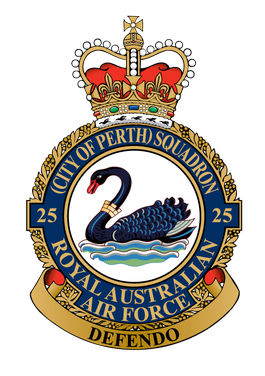
No. 25 Squadron is a general reserve squadron of the Royal Australian Air Force (RAAF). It is based at RAAF Base Pearce in Perth, Western Australia, and forms part of the Combat Support Group. The squadron was formed in early 1937 and until early 1939 was designated as No. 23 Squadron. During World War II, it provided local air defence for the Perth region, before undertaking Army co-operation duties in 1943–1944 and then converting to a heavy bomber role in 1945. Flying B-24 Liberators, the squadron took part in operations against Japanese targets in the Netherlands East Indies (NEI) and supported Allied ground operations during the Borneo Campaign.

Air Commodore Raymond James Brownell, was a senior officer in the Royal Australian Air Force (RAAF) and a First World War flying ace. Born in Hobart, Tasmania, Brownell was working as a clerk with a firm of accountants when he enlisted in the Australian Imperial Force on the outbreak of the First World War. He served during the Gallipoli Campaign before transferring to the Western Front. Awarded the Military Medal for his actions during the Battle of Pozières, he was accepted for a transfer to the Royal Flying Corps in 1917. After flight training in the United Kingdom, Brownell was commissioned as a second lieutenant and posted for operational service over the Western Front in September 1917. Moving with his squadron to Italy, he was awarded the Military Cross and credited with shooting down 12 aircraft by war's end. Taking his discharge in 1919, Brownell returned to Australia.

The Royal Australian Air Force (RAAF) operated McDonnell Douglas F/A-18 Hornet fighter aircraft between 1984 and 2021. The Australian Government purchased 75 A and B variants of the F/A-18 in 1981 to replace the RAAF's Dassault Mirage III fighters. The Hornets entered service with the RAAF between 1984 and 1990. Four Hornets were destroyed in flying accidents during the late 1980s and early 1990s.

Western Area Command was one of several geographically based commands raised by the Royal Australian Air Force (RAAF) during World War II. It was formed in January 1941, and controlled RAAF units located in Western Australia. Headquartered in Perth, Western Area Command was responsible for air defence, aerial reconnaissance and protection of the sea lanes within its boundaries. Its aircraft conducted anti-submarine operations throughout the war, and attacked targets in the Dutch East Indies during the Borneo campaign in 1945.
Air Vice Marshal Gavin Alexander Turnbull, is a retired senior commander in the Royal Australian Air Force (RAAF). He joined the RAAF in 1984, trained as a helicopter pilot, and transferred to fast jets in 1991. He has commanded No. 77 Squadron RAAF (2002–04), No. 81 Wing RAAF (2007–11) and the 609th Combined Air Operations Centre (2012), and deployed on operations to the Sinai Peninsula, Iraq and Afghanistan. He served as Air Commander Australia from 2014 to 2017, and Deputy Chief of Air Force from May 2017 to July 2019.






















